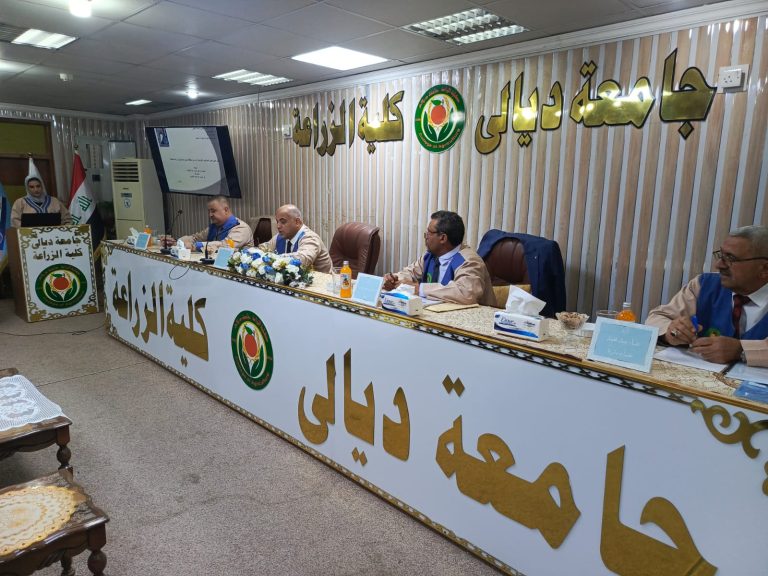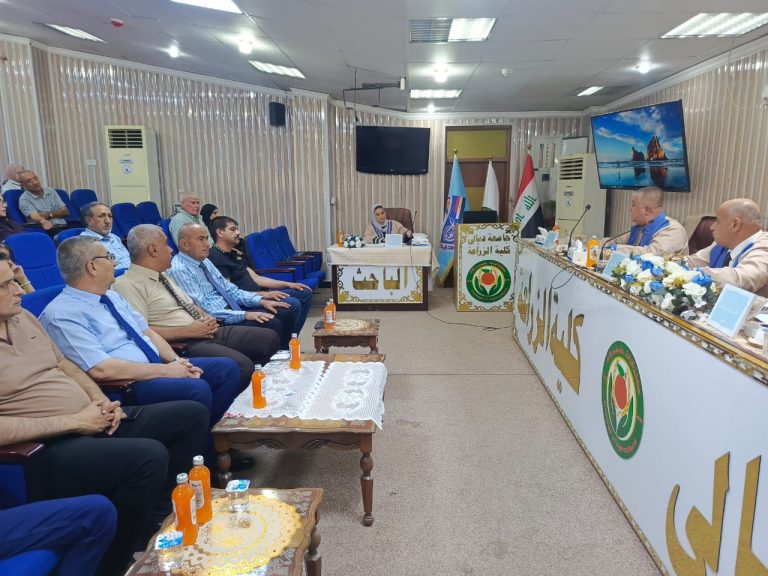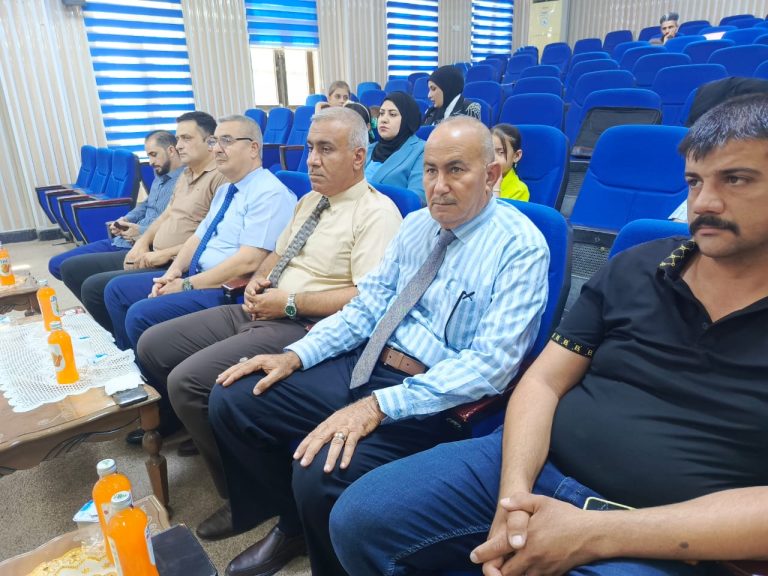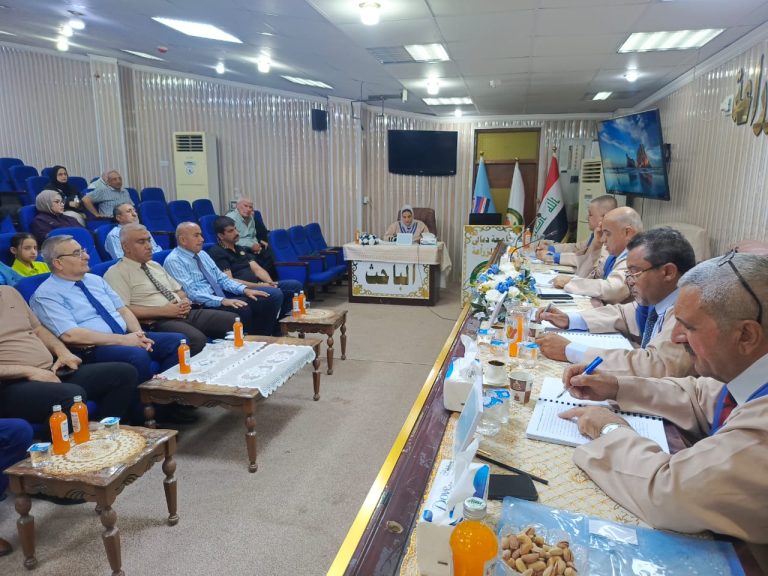A master’s thesis at the College of Agriculture on the evaluation of certain physical properties of soils from Diyala Governorate under different agricultural conditions.

The College of Agriculture at the University of Diyala discussed a master’s thesis entitled “Evaluation of Certain Physical Properties of Soils from Diyala Governorate under Different Agricultural Conditions.” The study, presented by the student Shaimaa Ibrahim Mahmoud, aimed to assess several physical properties of soils in Diyala Governorate under varying agricultural conditions. Soil samples were collected between October 20, 2023, and November 10, 2023, from a depth of 0 to 30 cm, corresponding to the A horizon. The samples were gathered from various regions of the governorate, including uncultivated barren lands, palm groves, orchards, and areas planted with different crops. They were stored in bags and subjected to both physical and chemical analyses to determine their characteristics and the variations between them.
The study reached several conclusions, including:
-
The application of significant regression analysis between soil fractions (sand, silt, and clay) and soil penetration resistance, based on F values at a significance level of less than 1%, yielded a correlation coefficient (R) of 86.3%. Any change in the proportions of soil fractions directly influenced both the fragmentation coefficient and penetration resistance.
-
A strong relationship was found between soil fractions and the fragmentation coefficient, with a correlation coefficient (R) of 69%.
-
Clay was identified as the most influential factor in determining both the fragmentation coefficient and penetration resistance due to its small particle size, which leads to the formation of a thin surface layer, known as the surface crust, during irrigation.
-
The surface crust was also found to be sensitive to silt particles, contributing to the formation of this layer.
-
The bulk density of the soil was significantly affected by the proportions of sand, silt, and clay, with a correlation coefficient (R) of 91.5%.
The study recommends:
-
Conducting extensive field studies that include varying soil depths to better understand the relationships between soil properties.
-
Developing mathematical models using computer software that can simulate experimental conditions.
-
Carrying out broad field experiments across a wide range of soil textures and investigating the impact of different clay minerals on surface crust formation, seedling growth, and water movement within the soil.










